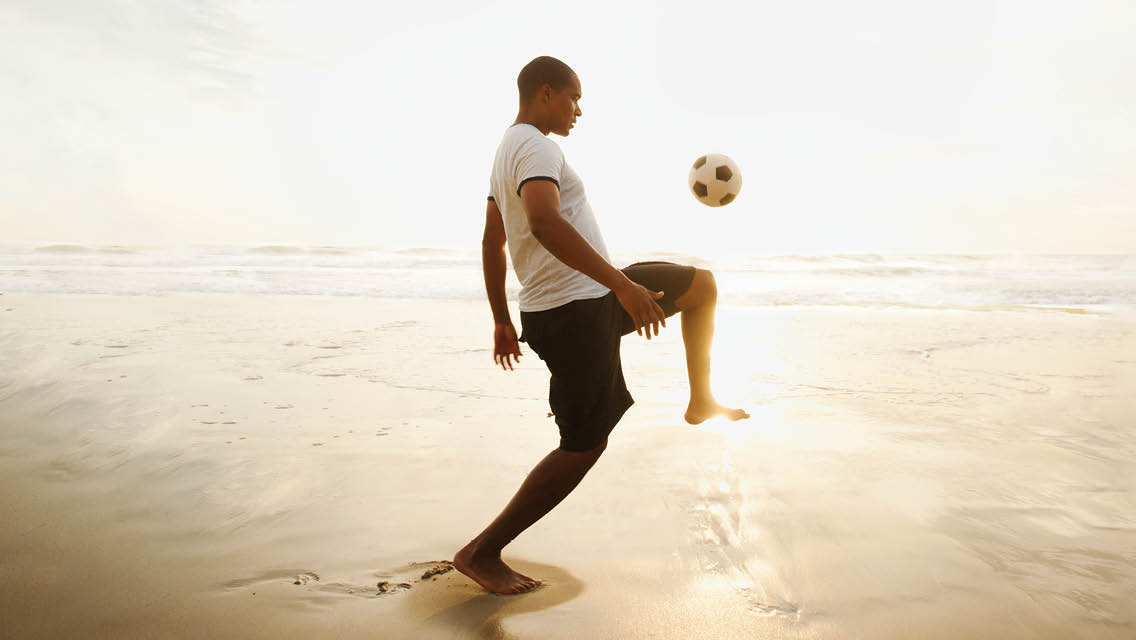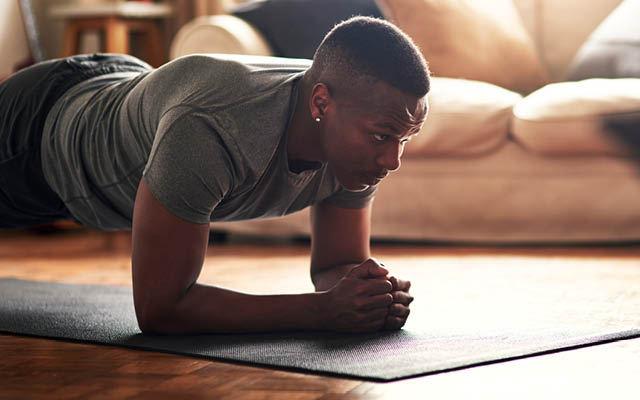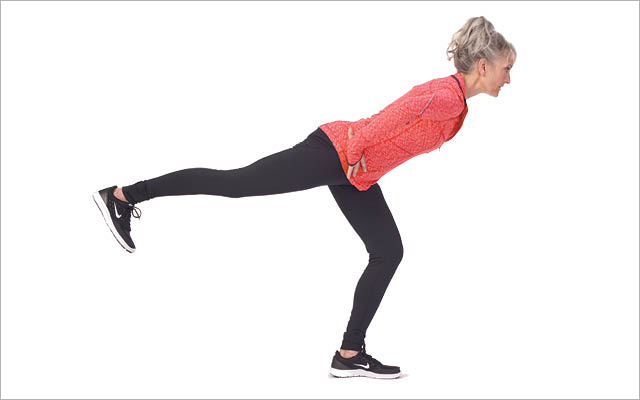Achieving balance between the left and right sides of the body and across muscle groups has long been viewed as a key fitness goal. That’s because rooting out left-right imbalances and shoring up discrepancies in strength and mobility can help reduce the risk of injury and soothe existing aches and pains, says Life Time master trainer Danny King.
Correcting imbalances can help build a functional foundation for novice and advanced exercisers alike, while also improving cross-body coordination and overall quality of movement.
But like many aspects of training — and life — it is possible to get too much of a good thing. That happens when seeking balance veers into seeking symmetry, or the perception of perfection.
“The goal of symmetry is a challenging endeavor,” asserts Lynn Shuck, a Minneapolis yoga instructor focused on alignment. That’s because our bodies are inherently asymmetrical.
“Most of us are naturally dominant on one side,” she says. “We write, carry our grocery bags, open cupboards, and reach for our children with the same hand. The nature of our daily activities is unbalanced, and our bodies are continuously adapting to make those activities more efficient and easier to perform.”
Plus, many sports and fitness endeavors require asymmetrical postures and unbalanced loads. Pitching a baseball and swinging a racket. Trail running on uneven terrain and swimming laps at the pool. Lifting weights and practicing yoga. Even dancing in your living room.
Moving your body means shifting weight and working through various ranges of motion; expressing yourself physically is an exercise in practicing asymmetry.
To that end, perfect symmetry isn’t necessarily desirable — and it might even be a hindrance. Rather than equating balance with symmetry, experts say, balance is better viewed as the ability to function and thrive as asymmetrical bodies living in an asymmetrical world.
Functional vs. Dysfunctional Asymmetry
Some asymmetries are natural, small, and benign — it’s possible to function well without going down a rabbit hole of corrective exercises.
Asymmetries become problematic when they evolve into imbalances that impede movement or cause discomfort, dysfunction, or injury. These imbalances are typically caused by movements or positions that are repeated or held regularly and over long periods of time. Some examples include:
- Repetitive movements that create cross-body imbalance (think golf or racquet sports) or muscle-group dominance (common among swimmers, for instance, whose sport emphasizes the upper body, and cyclists, whose quads may develop more than other muscles).
- Repetitive lack of movement, such as sitting for hours at a time.
- Injuries that decommission one limb or side of the body for weeks or months.
Imbalances can show up in a number of ways, some more subtle than others. Perhaps one side of the body is stronger or more mobile than the other. Perhaps one group of muscles is overdeveloped compared with other muscles. Maybe one group dominates or overcompensates for other groups. Or perhaps there is tightness in one or more areas.
Choosing whether to “correct” certain imbalances often comes down to intent and purpose, explains King. Cyclists may strive to improve their postures and might succeed in feeling better in everyday life — but “better” posture might not support an optimal racing posture, which calls for leaning or even hunching forward, sometimes for long periods of time.
A pitcher’s arm may have a goofy range of motion, but smoothing out and improving that range may prove costly in terms of speed and accuracy.
Certain athletes may gain a competitive edge by sacrificing some balance in strength and range of motion. It’s up to them to make those choices based on their goals.
But most of us aren’t elite athletes. We want to move well, feel good, and stay healthy for the long haul. We shouldn’t ignore imbalances that plague us, says King, as they will likely deteriorate or cause additional imbalances.
Finding Balance
The first step to overcoming an imbalance is shifting your mindset to dismiss the idea that you are in balance only when you are perfectly symmetrical.
It’s easy to get caught up in the belief that your body is broken and that there’s something you need to fix — so much so that you begin seeking symmetry at the expense of functional movement and broader fitness goals.
“Some folks get so concerned about very, very small differences in symmetry that it keeps them from making progress in what they ultimately want to do, like getting stronger, faster, or leaner,” says King.
Start addressing these imbalances outside the gym by challenging yourself in subtle, different ways while doing everyday tasks. Shuck suggests incorporating the following practices into daily life:
- Stand with your hips stacked over your heels. (This will be a slight shift backward for most of us.) Press down through your heels to lift your posture.
- Sit near the edge of a chair and press down into your heels to lightly engage your core. To avoid slumping, you can also sit a bit higher (on a pillow or folded blanket), so that your knees are lower than your hips.
- Cross your arms or legs opposite your usual way. In addition to being a bit of a brainteaser, this can help prevent one side of your body from becoming less mobile than the other.
Next, take a global approach to your training. Incorporating strength and mobility work can be a valuable rebalancing tool no matter your primary sport or discipline.
Unilateral moves —exercises that focus on one side of the body at a time — can be especially useful. They don’t have to be complicated; in fact, some may seem simplistic, but they’re highly effective.
Take common moves and subtract a limb: single-arm rows and presses; single-leg deadlifts; lunges; single-arm or single-leg planks; single-leg spinning on a stationary bicycle.
They might feel harder than the bilateral versions at first, so go easy on the weight or tension until you build strength and balance in this variation.
Working with a trainer, coach, or physical therapist can be especially useful for beginning exercisers and people with exaggerated imbalances or injuries stemming from these imbalances. (For a unilateral strength-training routine, visit “6 Unilateral Exercises”; for stretches to support mobility, see “Stretch Your Fitness”.)
“Our bodies are designed to move in an enormous range of directions,” Shuck says. “The more you move, the more you’ll be able to move.”
This article originally appeared as “Rethinking Asymmetry” in the April 2021 issue of Experience Life.





This Post Has One Comment
This is a great article. I had a stroke 6 years ago and I have been working so hard to strengthen my right side. It’s amazing how fast your body will shift to try to help you balance while being very out of balance. I have been focused on strength and worked with a personal trainer to help get my right side stronger. With all that work I PRed my 5k even beating my prestroke time. I continue to use my personal trainer advice in my strength classes to keep myself even. With all my hard work I have signed up for my first half marathon!